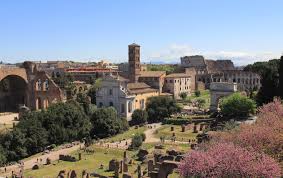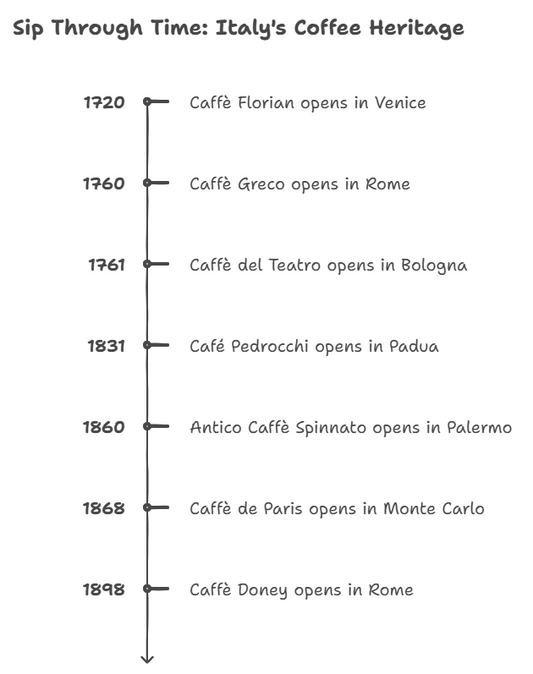Many tour companies in Rome often overlook Palatine Hill compared to Colosseum.
It is important to understand the history and facts of Palatine so that you don’t want to miss the opportunity to visit Palatine Hill in Rome. Your visit can’t be complete without exploring this ancient city.
Facts about the Palatine Hill
These facts will give you an idea of why was the Palatine hill important? Palatine Hill plays an important part in the history and myths of Rome that you may not have know:
- The English word “Palace,” the French “Palais,” and Italian “Palazzo” are the origins of the word Palatine.
- The worst Rome emperor Augustus was born in Palatine and later lived here with his wife Livia. The remains of his houses are decorated with colorful frescoes and it is the most impressive ancient art in Rome.
- At the age of 28, Caligula was killed on the Palatine. He was assassinated in a tunnel beneath the palaces on the Palatine.
- It is famous for the first private botanical garden in Europe built by Farnese family on the Palatine. Alessandro Farnese purchased a section of this ancient Palatine in 1550 and created a beautiful botanical garden with a wealth of art. You can only visit parts of the garden today because it fell into shamble over time.
- A myth that a fire breathing giant named Cacus once lived in the cave Palatine. His ferocious cannibal threatens the residents of neighboring Aventine Hill before Hero Hercules finally defeated it.
- A myth of Romulus and his twin brother Remus also lived in the cave on Palatine. Both brothers were discovered and raised by a she-wolf. An archaeologist claimed to discover the location of the cave in Palatine

With these important events, it is easy to see why Palatine was important. We will elaborate more on Palatine Hill.
What is the Palatine Hill?
Rome has seven hills, and it is one of the most famous of all. It is home to the oldest part of Rome city. In ancient Rome, it was considered the most desirable neighborhood in the city. It was also the home of emperors and aristocrats. These associations with ancient Rome made Palatine one of the most important places in Rome.
Moreover, today the Palatine is the extensive archaeological site where the stadium of Domitian and ruins of Flavian Palace still can be seen along with Hut of Romulus. Recently the house of Livia and the house of Augustus have been opened for the public. All these places are worth visiting for their well-preserved and amazing frescoes. Palatine is next to the Colosseum and Roman Forum, so you can buy a ticket for one site and visits the other two. It also makes sense to visit at least two sites on the same day.
History of Palatine Hill
The story of Palatine begins with legends and myths. The ancient Romans believed that twin brothers Romulus and Remus once lived on the hill. It was identified as “Hut of Romulus.” It is also known as the home of the founder of Rome. Romans restored the remains of the hut for centuries. You can still see the hut on the southwest of the Palatine. Palatine also has ancient origins.
According to some estimates, humans settle on the hill somewhere around the 10th century BC. Historians claim that it was the home of first Romans, and for centuries it was regarded as the most prestigious neighborhood in the city. The Palatine was desirable for many reasons, such as central location, cleaner air, mythical associations, cooler temperatures during summer, and a spectacular view of the city.
The residents of Palatine find themselves in the best place, as they are living in the center of the city without facing the issues of dirt and noise. During the Republican era, many wealthy Romans lived in the luxury villas on the Palatine. This hill later became the home of Rome’s first emperor. These emperors are responsible for the most impressive remains we see today. This place also contains the Temple of Apollo, a mysterious decorative building known as Septizodium.
These places are disappeared and hardly leave a trace of their existence. In the middle ages, some historical churches and convents were built on the Palatine Hill, and the Farnese family used the part of this place for their botanical garden. After the Renaissance, Palatine remains untouched until it was opened for the public as an archaeological site.
How to Get to Palatine Hill?
Nobody wants to miss the opportunity of visiting this place. Now, the question is how to get to the Palatine hill? It is located close to the Roman Forum and Colosseum, and more importantly, in the historic center of Rome. If you are someway near the Pizza Venezia and Circus Maximus, it is within walking distance. You don’t have to book personal transport because the area around Palatine is well-served with public transport. You can use the metro and many buses that stop near the Colosseum can take you to Palatine hill.
If you are planning to visit by taxi or bus, keep in mind that on Saturday and Sunday road connecting Colosseum and Pizza Venezia are closed for traffic. So, for visiting Palatine hill, you will have to walk part of the way, but don’t worry, it will be a pleasurable walk. In fact, we recommend you walk on Via Dei Fori Imperiali.
Conclusion
A Palatine is an ancient place located in the center of Rome. It is famous for its different historical sites. It was the home of the first emperor of Rome. Moreover, Emperor Augustus and his wife lived in the hill. In 1550, some part of this place was purchased by the Farnese family, and they built a botanical garden there. You can still see the remains of that garden during your visit to Palatine Hill.




